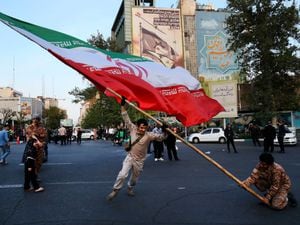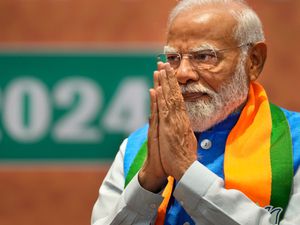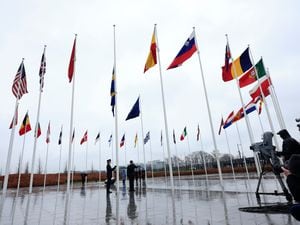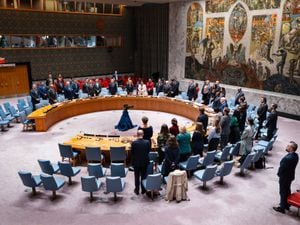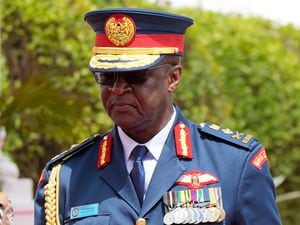Taliban gains drive Afghan government to recruit militias
The Taliban’s recent wins in the north of the country are in the traditional stronghold of minority ethnic groups that drove them from power.
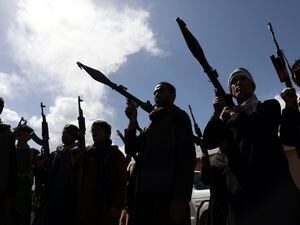
Taliban gains in northern Afghanistan have driven a worried government to recruit militias with a track record of fomenting chaos and widespread killing.
The region is the traditional stronghold of the country’s minority ethnic groups that drove the Taliban from power there nearly 20 years ago.
Analysts say the government move is “desperate” after the Taliban overran several districts in several provinces of in the country’s north.

The gains have been strategic. One district on the border with Tajikistan is a key trade route. Another, in Doshi, in Baghlan province, is home to the single road linking northern Afghanistan to the capital, Kabul.
The Taliban have over-run multiple districts in the north, some of them reportedly with hardly a fight, even as the US and Nato press forward with their final withdrawal from Afghanistan.
By all accounts their departure will be complete long before the September 11 deadline set by US president Joe Biden when he announced in mid-April an end to America’s “forever war”.
The Taliban gains are significant because of the transportation routes they provide the insurgents. But equally significant is the fact that the north is the traditional stronghold of Afghanistan’s minority ethnic groups, who aided the US-led invasion that drove the Taliban from power nearly 20 years ago and have been part of the ruling leadership since.
The traditional stronghold of the Taliban, who are mostly ethnic Pashtuns, has been in the country’s south and east.

A worried government has launched what it called National Mobilisation, arming local volunteers.
Observers say the move only resurrects militias that will be loyal to local commanders or powerful Kabul-allied warlords, who wrecked the Afghan capital during the inter-factional fighting of the 1990s and killed thousands of civilians.
Bill Roggio, senior fellow at the US-based Foundation for Defence of Democracies, said: “The fact that the government has put out the call for the militias is a clear admission of the failure of the security forces … most certainly an act of desperation.
“The Afghan military and police have abandoned numerous outposts, bases, and district centres, and it is difficult to imagine that these hastily-organised militias can perform better than organised security forces.”
On Wednesday at Koh Daman on Kabul’s northern edge, dozens of armed villagers in one of the first National Mobilization militias gathered at a rally.

“Death to criminals!” and “Death to Taliban!” they shouted, waving automatic rifles. Some had rocket propelled grenade launchers resting casually on their shoulders.
A handful of uniformed Afghan National Police officers watched. “We need them, we have no leadership, we have no help,” said one of the policemen.
He criticised the defence and interior ministries, saying they were stuffed with overpaid officials while the front-line troops receive little pay.
“I’m the one standing here for 24 hours like this with all this equipment to defend my country,” he said, indicating his weapons and vest jammed with ammunition.
“But in the ministries, officials earn thousands.”

The US and Nato have committed to paying four billion dollars (£2.8 billion) annually until 2024 to support the Afghanistan national security and defence forces.
However, even Washington’s official watchdog auditing spending says Afghan troops are disillusioned and demoralised, with corruption rife throughout the government.
As the districts fell, Afghan president Ashraf Ghani swept through his defence and interior ministries, appointing new senior leadership, including reinstating Bismillah Khan as defence minister.
Mr Khan was previously removed for corruption, and his militias have been criticised for summary killings. They were also deeply involved in the brutal civil war that led to the Taliban’s takeover in 1996.
Afghan and international observers fear a similar conflict could erupt once more. During the 1990s war, multiple warlords battled for power, nearly destroying Kabul and killing at least 50,000 people – mostly civilians – in the process.
Those warlords returned to power after the Taliban’s fall and have gained wealth and strength since.
They are jealous of their domains, deeply distrustful of each other, and their loyalties to Mr Ghani are fluid.
Ethnic Uzbek warlord Rashid Dostum Uzbek, for example, violently ousted the president’s choice for governor of his Uzbek-controlled province of Faryab earlier this year.
A former adviser to the Afghan government, Torek Farhadi, called the national mobilisation “a recipe for future generalised violence”.
Taliban spokesman Zabihullah Mujahid told The Associated Press on Thursday that the insurgents had captured 104 districts since May 1, including at least 29 in recent fighting.
That brought the total area of Taliban control to 165 of Afghanistan’s 471 districts nationwide.

